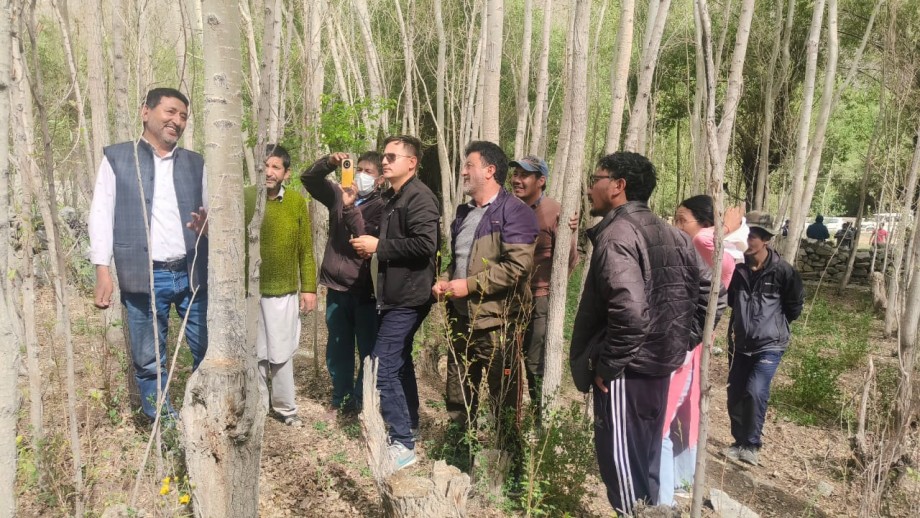Awareness camp on Pheosia Albivertex management in poplar trees held

The Forest Department Kargil, in collaboration with Krishi Vigyan Kendra (KVK), Kargil, conducted a one-day awareness camp on the management of Pheosia Albivertex on poplar trees at Ashina on June 23. The outbreak of this pest was initially noticed through a video circulated on social media.
Scientists from KVK Kargil and officials from the Forest Department visited the site and urged villagers to take immediate action to prevent further damage.
The event was attended by Sajjad Khan, Councillor of Saliskot; Dr. Mohammad Mehdi, Principal Scientist at KVK Kargil; Niyaz, Range Officer in Kargil; officials from the Forest Department; the Lambardar, and villagers from Ashina.
Councillor Sajjad Khan addressed the gathering, assuring complete support from the Council to manage the pest. He requested the general public to cooperate with KVK and the Forest Department to control the insect.
Dr. Mehdi provided a detailed briefing on the insect, its nature of damage, and the potential economic losses if not managed promptly. He emphasized that the poplar tree is a main source of livelihood in the region, and failure to manage the pest could lead to its spread to adjoining areas, making it more difficult to control. The management of the insect is difficult without the support and cooperation of the general public.
He explained that the insect is a defoliator that voraciously feeds on poplar leaves, causing complete defoliation of the tree. The management practices recommended by Dr. Mehdi include:
- Sanitation of Infested Areas: Collect larvae using brooms from the branches and destroy them.
- Spraying: Apply Bacillus thuringiensis (Bt) at a concentration of 50 ml per 10 liters of water on initially infested trees. Avoid spraying on completely defoliated trees and wait for 6 hours to achieve effective results. Spraying must be avoided on rainy days.
- Flooding: Flood the infested area with water to collect larvae in one corner, making it easier to destroy the 4th instar larvae.
- Collection and Destruction of Pupae: Carry out during autumn and winter seasons.
- Installation of Light Traps: Install traps in April and May.
Niyaz, Range Officer from the Forest Department in Kargil, organized all the necessary equipment and Bacillus thuringiensis from the department. He assured that the entire area would be covered but emphasized the need for support from the general public.
Ismail, the Lambardar of the village, expressed his gratitude for the prompt support from the Forest Department Kargil in arranging the necessary equipment. He assured his and the villagers' support to the department for the management of the insect and thanked all the officials of both KVK and the Forest Department for coming on a Sunday for the camp.
In the end, Bacillus thuringiensis (Bt) at a concentration of 50 ml/10 liters was sprayed on the initially infected trees using power sprayers, covering an area of 1 hectare. The spraying will continue the next day to cover most of the infested areas.





